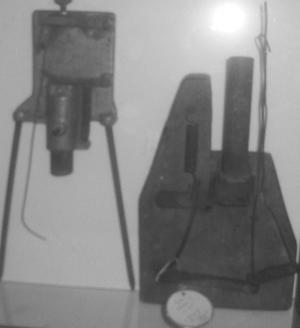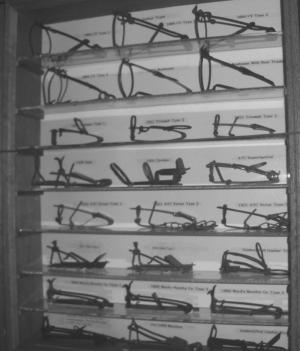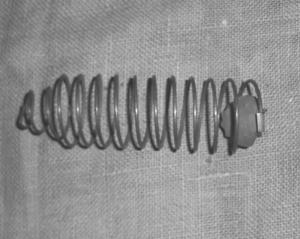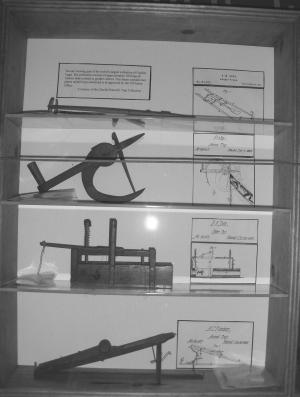2015 - Volume #39, Issue #1, Page #23
[ Sample Stories From This Issue | List of All Stories In This Issue | Print this story
| Read this issue]
Gopher Trap Collecting
 |
 |
 |
 |
The Californian’s collection includes 240 different gopher traps and is most likely the world’s largest. And the lowly traps are getting more respect, too. It’s common for many antique gopher traps to sell for $75 to $300, with some rare ones selling for more than $1,000.
“I think the mechanics are ingenious,” Roncelli says of the designs inventors came up with. “But a real gopher trapper knows right away which ones will work.”
He has been a “real” gopher trapper since his childhood, when he quickly figured out trapping gophers for 25 cents/each for a wealthy farmer was better than picking a crate of Loganberries for 35 cents.
“I bought my first car at age 15 with gopher money,” he recalls.
He also purchased a variety of traps, often for 10 cents at flea markets. For trapping he preferred Macabee traps - built in a Californian Victorian mansion and packaged in shoe boxes (www.gophertrapping.com).
Roncelli resumed buying traps (for his growing collection) in his late 20’s, paying no more than $1/trap - until he learned about the North American Trap Collectors Association in the 1980’s.
“I realized I had made some good deals, and I started trading traps,” Roncelli says. He recalls trading one very nice bear trap for about 3 dozen gopher traps. The man he traded with likely figured he was getting the better end of the deal, Roncelli concedes, but the gopher traps were part of a trap tester’s collection and have become very valuable.
“Trap inventors were very ingenious, with some amazing engineering feats. That’s what makes them fascinating to study - the variety of designs,” says Rex Marsh, who worked as a research scientist in the Department of Wildlife, Fish, and Conservation Biology at the University of California. “Most never got rich on their traps and very few were major successes.”
In his work and later research for his book, “Trap Guns for Pocket Gophers and Moles,” he discovered most gopher traps were patented in California. Gophers girdled trees and ate roots destroying orchard trees and grapevines planted in the last third of the 19th Century.
Leg-hold traps weren’t very effective, so starting in about 1870 inventors came up with a variety of designs, mostly pincher traps, Roncelli says. He purchased one of the rarest models, a Morawtz trap (1904 patent) for the outrageous sum of $300 when internet sales first started.
“It’s the Mona Lisa of traps,” he says. “It’s like a gripper with an over-center trigger that snaps down four clamps. The engineering is flawless,” Roncelli says.
Other less successful models include a round coil with a trap door with spikes made by an inventor named French in San Francisco.
“Imagine a live gopher in that and trying to dig it out of the coil,” Roncelli says.
Another model, the Horne trap, used a Mason jar and lid to capture a gopher.
Live traps were used by scientists to tag and study gophers, and Roncelli notes that he has the only Lewis live trap that is known to exist.
His collection includes all types of traps including spear-style traps and trap guns that shoot .38 to .45 ammunition. Marsh notes the trap guns seemed to disappear in the late 1940’s, probably because they could injure pets or children who dug up the traps.
Roncelli says that he plans to sell or find a home for his collection.
But he doesn’t plan on selling all of the traps. He still traps gophers to protect 40 fruit trees on his property. While the Macabee traps are still sold (but now made in China), he has switched to the California-made stainless steel Gophinator™ (www.traplineproducts.com).
Contact: FARM SHOW Followup, Charles Roncelli, 3625 Granger Way, Royal Oaks, Calif. 95076 (ph 831 724-1948; pacratfarm@aol.com).

Click here to download page story appeared in.

Click here to read entire issue
To read the rest of this story, download this issue below or click here to register with your account number.




